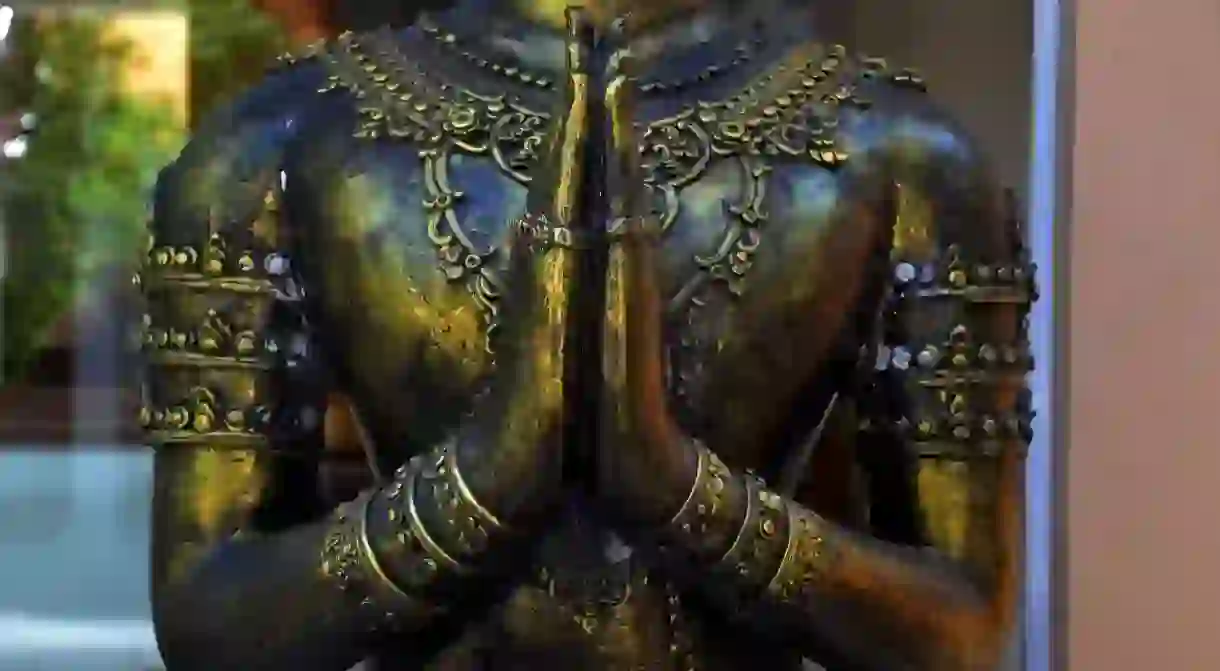How Did Cambodia Get its Name?

Cambodia is a proud nation, with a culture that stretches back to pre-Angkorian times – just like its name. Running parallel to the country’s history, the Kingdom’s title has undergone several reinventions to get to where it is today.
Cambodia, Cambodge, Kampuchea. These are all monikers used to refer to the Kingdom of Wonder, which officially goes by the Kingdom of Cambodia. Cambodia is an anglicised twist on the colonial French’s name for Cambodia – ‘Cambodge’. ‘Kampuchea’ is the official Khmer title for the nation people call home, and a word that has its roots steeped deep in history. Culture Trip explores how Cambodia got its name.

The word ‘Kampuchea’ is derived from the Sanskrit Kambujadeśa, or Kambuja – an early tribe from northern India who oversaw huge parts of Southeast Asia ahead of the formation of the Khmer Empire. It is thought that Indian traders introduced the name when they discovered remote lands in the region.
Its origins also feature in a myth found in inscriptions carved into the walls of Baksei Chamkrong, a small Hindu temple that forms part of the Angkor complex dating back to 944. According to the legend, Indian hermit Kambu Swayambhuva met celestial nymph Mera and the two wed, creating a new kingdom that grew into the Chenla Empire, which pre-dated the Khmer Empire.
A timeline of Cambodia’s modern names
Recent history has seen Cambodia’s official title take on several forms. Since 1953 there have been six different names for the nation, as various ruling bodies have sought to put their stamp on it.

1953 – 1970: The monarchy, headed by the late King Norodom Sihanouk, officially bestowed it with the name of the Kingdom of Cambodia – the official title of today.
1970: When the US-backed Lon Nol government overthrew the monarchy, it established the Khmer Republic – the country’s newly given name. Under Lon Nol, civil war spread and US bombing campaigns hardened, providing the Khmer Rouge with the perfect platform to garner support in returning power and the country back to the people while restoring peace.
April 1975: The capital of Phnom Penh fell to the Khmer Rouge. Under the regime’s plans to create an agrarian society under the rule of Pol Pot, the Khmer Republic became Democratic Kampuchea.

1975 – 1978: During the next four years, an estimated third of the population perished under the genocidal Khmer Rouge regime. Whole cities of people were evicted and forced to work in the countryside. The country’s elite and educated citizens, including doctors, teachers, artists, politicians and even those who wore glasses, were all targeted under the Khmer Rouge. Evidence of this bitter part of Cambodia’s history can be seen at The Killing Fields and S-21 Genocide Museum in Phnom Penh.
January 1979: Vietnamese forces stormed Phnom Penh, toppling the Khmer Rouge. The formation of a Vietnamese-backed government called the People’s Republic of Kampuchea (PRK), led to the country being named after the ruling party between 1979 and 1989. As the PRK failed to receive international backing, in a bid to turn popular opinion it named the country the State of Cambodia.
This was a name the Kingdom kept throughout the United Nations’ peace-keeping operation, which launched in February 1992 after years of negotiations.
The United Nations Transitional Authority in Cambodia (UNTAC) was a ground-breaking mission for the UN and saw huge efforts pumped into restoring peace to a country crippled by decades of war. It was also the first time the organisation took over operations of a country, organising and holding elections, and monitoring human rights. UNTAC cost more than US$1.6 billion and involved 46 countries.
In 1993, with the first post-Khmer Rouge democratic elections having taken place, the monarchy restored and a new chapter for the country lying ahead, the country’s name was reinstated to the Kingdom of Cambodia – a title it proudly still holds today.













